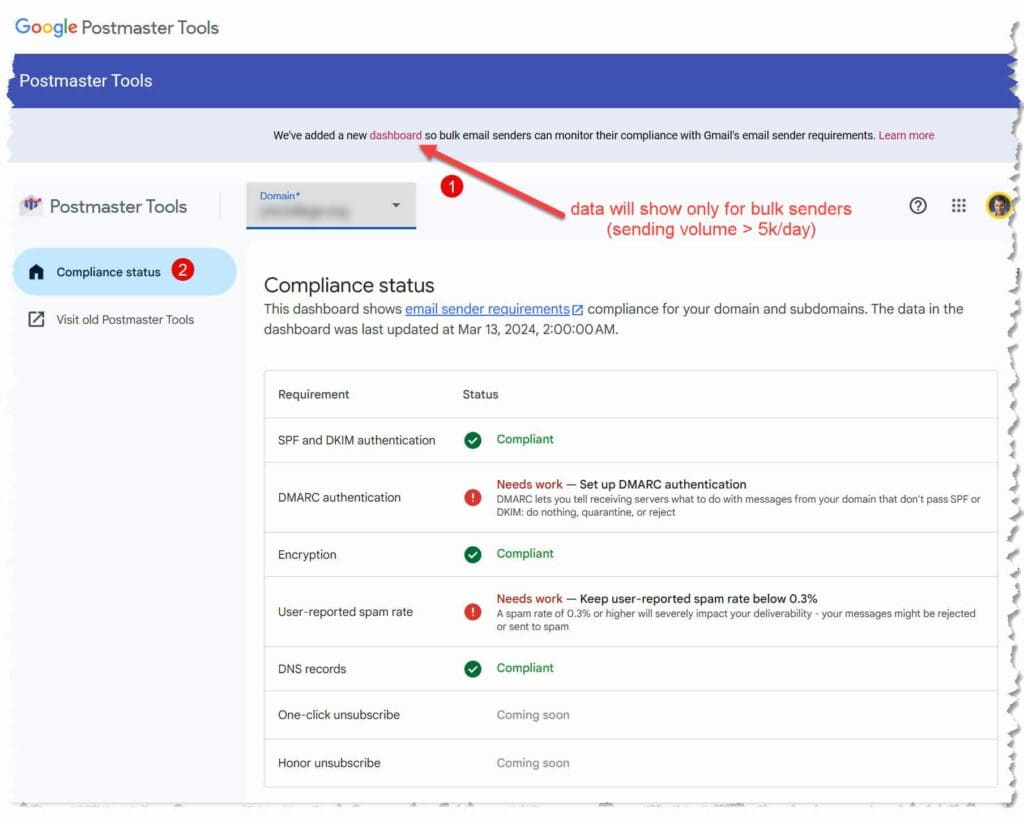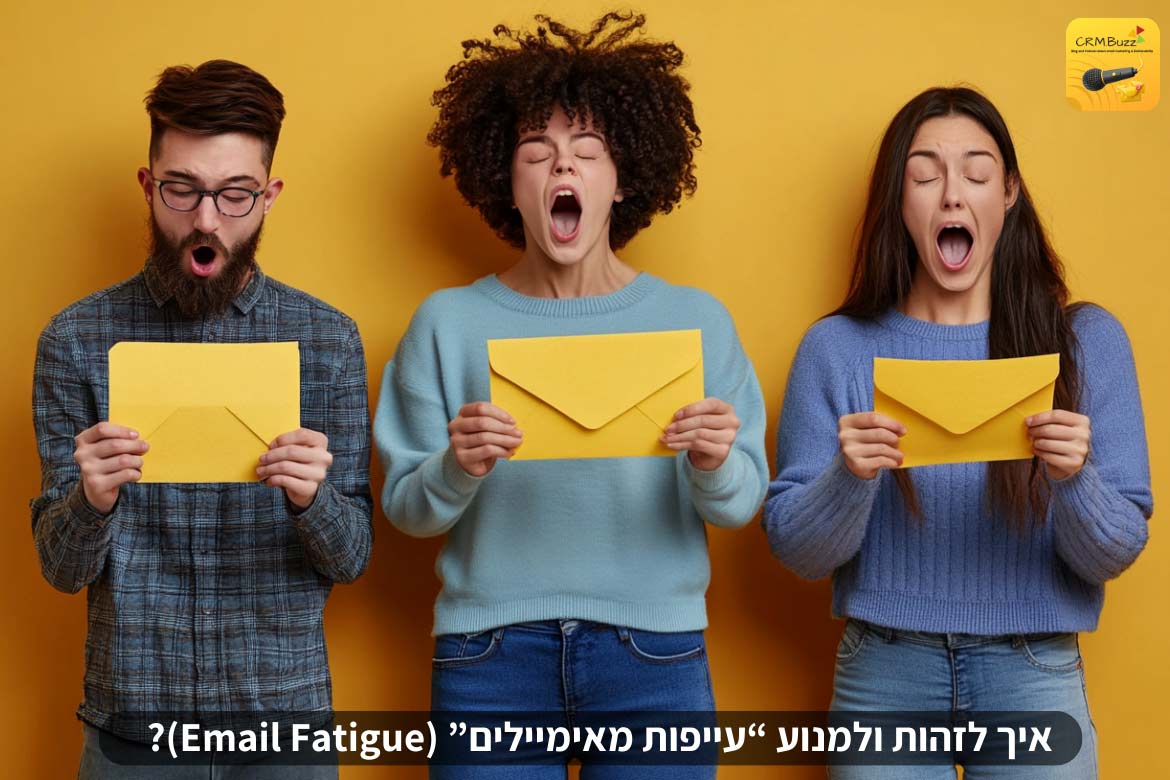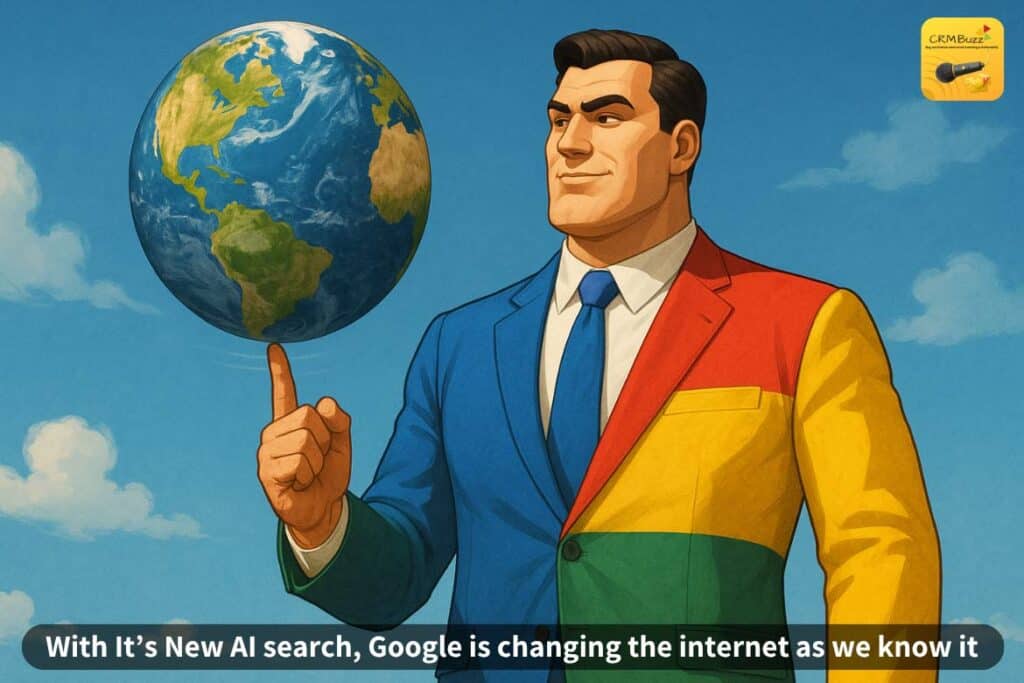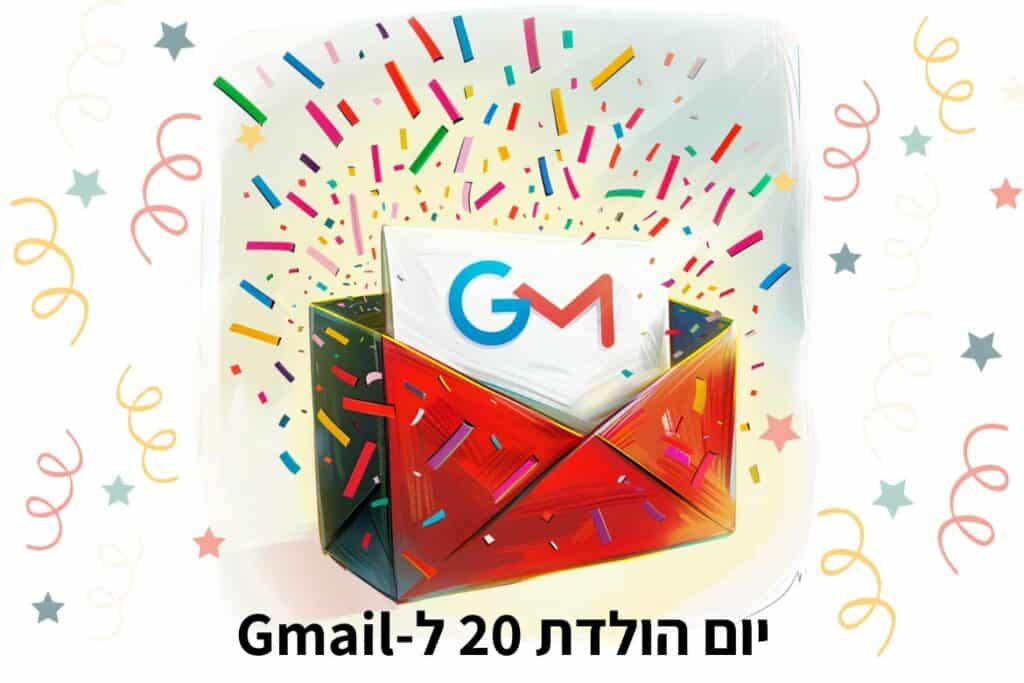We all receive too many emails, which can make us feel overwhelmed. This phenomenon is called email fatigue, and it is part of a more significant trend of being flooded with marketing messages and excessive content across various channels and networks. What is email fatigue, how can we identify it, and what can be done to reduce it?
Table of Contents
Listen to EmailGeeks.Show Podcasts

A podcast featuring the leading email marketing and email deliverability experts and email geeks.
I am Sella Yoffe, an email deliverability consultant from Israel. I work with global email senders, startups, and email service providers to improve their email deliverability and strategy.
Join us in this podcast, where top email marketing and deliverability professionals share their tips and advice.
—
Opening music from #Uppbeat (free for Creators!): https://uppbeat.io/t/reakt-music/deep-stone. License code: TPPQ0BDS5ZP1NWZL
Welcome to episode 12 of emailgeeks.show, the podcast where email enthusiasts from around the world share insights on email marketing, deliverability, and strategies. Hosted by Sella Yoffe, an email deliverability consultant, this episode features Jakub Oleksa, founder and CEO of MailKit and Omnivery. Together, they delve into the fascinating world of non-human interactions (NHI) in email marketing, a phenomenon reshaping how marketers understand opens and clicks.
Key Discussion Points:
Introduction to Non-Human Interactions (NHI) [00:02:30]
- Explanation of NHI and its impact on email marketing.
- Differentiating between bot interactions and NHI.
The Role of Apple Mail Privacy Protection (MPP) [00:10:45]
- How Apple MPP affects open rates.
- Discussion on the rise of non-humans opens due to Apple MPP.
Impact of NHI on Email Marketing Metrics [00:25:00]
- Challenges in accurately measuring open and click rates.
- The effect of NHI on conversion rates and list hygiene.
Strategies for Dealing with NHI [00:40:15]
- Importance of understanding and suppressing NHI.
- How marketers can adjust strategies to account for non-human interactions.
The Future of Email Engagement Metrics [00:55:30]
- Potential industry standards for engagement metrics.
- The role of mailbox providers in providing reliable engagement data.
Advanced Solutions for Detecting NHI [01:10:00]
- Introduction to Omivery’s API for detecting non-human interactions.
- How ESPs and large senders can use advanced tools for better metrics.
Quotes:
– “Non-human interactions are those interactions that appear to come from the recipient but are actually performed by automated systems.” [00:05:15]
– “Apple MPP is definitely a non-human interaction… it loads emails in the background, making everyone seem active.” [00:12:30]
– “You cannot do list hygiene based on fake opens and fake clicks. You need to focus on real human interactions.” [00:50:45]
– “The biggest value of open rates is when you’re looking at open rates over time per destination.” [00:46:30]
Stay tuned for more episodes of emailgeeks.show, where we continue to explore the latest trends and insights in the world of email marketing. Don’t forget to subscribe and leave a review if you enjoyed this episode!
subscribe to our mailing list to get updates
EmailGeeks.Show Season. 1 Episode: 12
Copywrite: DATAMEDIA | Sella Yoffe
Podcast Page: Email Geeks Show website
Episode Page: https://emailgeeks.show/jakub-olexa-nhi-non-human-interactions/
———————
opening music: https://uppbeat.io/t/reakt-music/deep-stone
License code: TPPQ0BDS5ZP1NWZL

Fatigue from Emails and Other Messages
I think there is a consensus that we all receive too many emails…
Email Fatigue describes a state where recipients feel overwhelmed, indifferent, or simply tired of receiving too many emails. This results in lower engagement and less interest in the emails we send.
This email fatigue phenomenon is part of a broader trend of being overwhelmed by marketing messages, and an immense amount of content flooding us. To illustrate, the total viewing time for all Netflix content would be over four years of continuous watching (Assuming that no breaks are taken and no new content is added.). We cannot consume all the content in the world, which leads many of us to frustration and anxiety.
On average, a person is exposed to between 4,000 and 10,000 marketing messages daily. Add to this the unquantifiable amount of content on social media and other channels, all competing for our attention.
With the introduction of generative AI and the ease of creating content (much of which is not particularly high-quality), the amount of content flooding us will reach dimensions that threaten to “drown” us. This joins many other factors (watch the video) that steal our focus.
Apple ADD?
These days, it seems that we all suffer from a kind of modern Attention Deficit Disorder (ADD).
We struggle to focus on the relentless pace of attention grabbers as notifications arrive on our devices every moment. It’s no surprise that we say we have the attention span of a goldfish. There is a deliberate reason for this. (see the above video).
This phenomenon joins the trend where we try to multitask (proven to be highly ineffective) out of fear of missing out. Sitting with a partner on the couch watching a series while scrolling through social media feeds? This phenomenon is called Fear of Missing Out (FOMO). We don’t want to miss out and fear disconnecting for a moment because we might miss something.
We try to consume everything, but there are only 24 hours in a day. Bummer. I know…
As for marketing emails, this means we dedicate a fraction of a second to deciding whether to engage with the emails in our inbox.
Many brands send an endless stream of sales content without any other type of content – just sales promotions and offers, sometimes more than one email per day.
Marketing guru Seth Godin says in this context, “Would They Miss You If You Were Gone?”
Would recipients miss your emails if you stop sending them? Would they notice if you stop?
Do you think the content you send is important enough to your recipients to pull it from the promotions tab to the primary inbox? Is it important and interesting enough for them to rescue your emails from the spam folder if they end up there?
Consent to the spamming?
Is the consent we, email marketers and brands, receive from recipients permission to spam them? Would you subscribe to a newspaper or TV channel if all you got was advertising and sales content?
So why do marketers think it’s okay to send only sales promotions via email?
CMOs and email marketers are addicted to the money that email brings and find it hard to send fewer emails. Each additional email brings in more money, even when the cost is upsetting the entire audience with more blasts.
But there’s a classic Catch-22 here. Sending more emails exhausts recipients, leading to email fatigue, especially if all the content is sales-oriented.
How to Identify Email Fatigue?
Common signs of email fatigue include a decrease in email open rates, a decrease in click-through rates (CTR), an increase in unsubscribe rates, an increase in spam complaint rates, a decrease in time spent on content, and an overall decrease in recipient engagement.
How Does Email Fatigue Affect Email Deliverability?
Email fatigue influences deliverability due to the increase in negative metrics and the decrease in positive engagement metrics. When recipients experience email fatigue, they tend to ignore emails (not opening or clicking), delete them without reading, unsubscribe, and may even mark them as spam. These behaviors send negative signals to mailbox providers, indicating that the sender’s messages are unwanted or irrelevant. These negative metrics can hurt the sender’s reputation. A low reputation increases the chance of mailbox providers classifying future messages as unwanted or uninteresting. Fewer emails reach the inbox and more land in the spam folder.
What Are the Common Causes of Email Fatigue?
Firstly, it is a matter of dosage. If all the content you send to your recipients is sales-oriented, it might be time to rethink your strategy. Several factors can contribute to increased email fatigue: high frequency of email sending, irrelevant content, repetitive content, poor personalization or lack of personalization (which can stem from an inability to segment and tailor content to your target audiences or simply because of… laziness), inappropriate timing of sending, and a lack of expectation alignment.
How Can Email Fatigue Be Reduced?
To mitigate email fatigue, marketers need to change things differently. This requires market education that might lead marketers to view their activities through recipients’ eyes, becoming more aware of this phenomenon and making efforts to reduce it. Marketers often learn the hard way. Email providers are the major regulators and market educators. The major mailbox providers primarily rely on feedback and analysis of users’ behavior. I believe less is more, and the only way is to think differently.
Send Less Gain More?
We all search for good and interesting content. Less sales-oriented content and more quality, educational, enriching, or entertaining content. The kind of content you would want to receive yourself from brands you’ve given consent to send you emails. Sometimes this content already exists inside organizations, such as behind-the-scenes content or content that brands mainly distribute through other channels (primarily social media) but not through the channel where they make the most money. Using engaging content in emails can increase recipient engagement, improve positive metrics, and enhance deliverability. This allows you to occasionally include sales emails.
Segmentation and Personalization of the Mailing List
Ensure recipients receive targeted and relevant emails related to their areas of interest and avoid blasting generic content. Personalized emails lead to better engagement with each recipient and their personal taste. It’s worth investing in a data project that integrates with the mailing system to provide information, enabling good personalization.
Listen to and follow the podcast

A podcast featuring the leading email marketing and email deliverability experts and email geeks.
I am Sella Yoffe, an email deliverability consultant from Israel. I work with global email senders, startups, and email service providers to improve their email deliverability and strategy.
Join us in this podcast, where top email marketing and deliverability professionals share their tips and advice.
—
Opening music from #Uppbeat (free for Creators!): https://uppbeat.io/t/reakt-music/deep-stone. License code: TPPQ0BDS5ZP1NWZL
Introduction:
Welcome back to another insightful episode of EmailGeeks.Show, the podcast that brings together email marketing experts from around the globe.
I’m thrilled to host the legendary Joe Pulizzi, the “godfather of content marketing,” in this episode.
Joe is an entrepreneur, marketer, best-selling author, podcaster, and speaker and has influenced my journey as a content creator.
Joe shares his insights into content creation and strategies for standing out in a crowded digital landscape.
Key Discussion Points:
1. Breaking Through the Noise (00:00:01)
Joe discusses the importance of finding a unique area of differentiation to stand out amidst the content clutter.
Emphasizes the need to understand your target audience and leverage your unique skills and knowledge.
2. Joe’s Journey (00:01:30)
Joe shares his background in the publishing industry and the evolution of content marketing from custom media to a strategic marketing approach.
3. Content Creator vs. Content Entrepreneur (00:06:45)
Differentiates between content creators and content entrepreneurs, highlighting the importance of a “content tilt” for differentiation.
4. Building an Audience (00:12:30)
Joe advises focusing on one platform and being consistent in building a loyal audience over time, likening content creation to a marathon rather than a sprint.
5. Niche Focus (00:17:00)
Discusses the benefits of targeting a niche audience to become a leading informational expert in that area.
6. Email First Approach (00:23:45)
Joe explains the importance of not building content solely on rented platforms like social media. He emphasizes the value of controlling distribution through email.
7. Newsletters Referral Programs for (00:30:00)
Insights into successful referral programs used by newsletters like Morning Brew and The Hustle, and how they drive subscriber growth.
8. Content Marketing’s Role in Email (00:36:15)
Joe discusses how content marketing can enhance email programs by providing value beyond sales pitches.
9. Partnerships and Joint Ventures (00:43:00)
Encourages collaborations between non-competing companies to share content creation efforts and reach wider audiences.
10. Rising Above the Content Clutter (00:50:30)
Offers tips for content creators to differentiate themselves and maintain a long-term commitment to their audience.
Notable Quotes:
“You have to figure out your sweet spot and differentiate in a way that most creators don’t think about.” (00:00:45)
“Think of your email newsletter as a product, just like any other product you create.” (00:36:45)
“If you’re thinking short-term, don’t do content marketing. This is a marathon, not a sprint.” (00:14:15)
Conclusion:
Joe Pulizzi provides valuable insights into the world of content marketing and email strategy. His emphasis on differentiation, audience focus, and long-term commitment provides a roadmap for aspiring content entrepreneurs.
Follow Joe Pulizzi:
– Subscribe to The Tilt newsletter at thetilt.com
– Follow Joe on social media: @JoePulizzi
– Explore Joe’s books and content at joepulizzi.com
EmailGeeks.Show Season. 1 Episode: 10
Copywrite: DATAMEDIA | Sella Yoffe
Podcast Page: Email Geeks Show website
Episode Page: https://emailgeeks.show/joe-pulizzi/
———————
opening music: https://uppbeat.io/t/reakt-music/deep-stone
License code: TPPQ0BDS5ZP1NWZL

Optimizing Sending Frequency to Reduce Email Fatigue
Find the right balance in your sending frequency. Too many emails will overwhelm recipients and increase email fatigue; too few will lead to decreased engagement. Some brands email multiple times a day, while others do so once a month. Find the frequency that works for you, considering email fatigue. If you’re a brand that emails weekly, try to stick to a specific day and time. This will train recipients to “tune in” and anticipate your emails like a TV show. Finding the right spot will come through experimentation and timing.
Monitoring Positive and Negative Engagement Metrics
Consistently track changes in open rate trends. Remember that this metric is inaccurate due to the NHI (Non-Human Interactions) phenomenon, such as Apple MPP. Track click-through rates; they are slightly more accurate. You can encourage recipients to respond to your emails; this is also a positive signal. Alongside positive metrics, you must track negative metrics like unsubscribe rates. If the open-to-unsubscribe rate (a term coined by Dela Quist) is high, it means people are opening your emails for one reason only: to remove themselves from your list.
I’m often surprised to find that even among large marketers, there isn’t adequate monitoring of this metric using Google Post Master Tools, which is the only way to see spam complaints in Gmail. You can’t see that data in your ESP (they don’t include Gmail. Another misconception: sometimes the spam report rate is very low because most of your emails are already in the spam folder.
Learn more about Google Post Master Tools

Listen to and follow the podcast

A podcast featuring the leading email marketing and email deliverability experts and email geeks.
I am Sella Yoffe, an email deliverability consultant from Israel. I work with global email senders, startups, and email service providers to improve their email deliverability and strategy.
Join us in this podcast, where top email marketing and deliverability professionals share their tips and advice.
—
Opening music from #Uppbeat (free for Creators!): https://uppbeat.io/t/reakt-music/deep-stone. License code: TPPQ0BDS5ZP1NWZL
Follow Dela on LinkedIn

Another illustration of the fact that email is a complex channel that requires checks and balances is demonstrated by Dela Quist, who founded the world’s largest email marketing agency and now advises companies and businesses and email agencies on email marketing strategy, says that even when we ignore emails, we are actually activating a significant “cognitive processing power”. According to him, the very fact that recipients see emails from a certain brand that appears in the inbox, they see the name of the sender (or brand), the email address from which the email was sent, the header and the subheading. This recurrence increases brand awareness, even though engagement is not visible at all in the mailing system.
To conclude –
We all get flooded with emails, which can lead to feelings of overwhelm. This phenomenon is known as email fatigue, and it is part of a larger trend of being bombarded with marketing messages, endless content, and information across multiple platforms and networks.
Podcast interviews with international email marketing experts
Listen to EmailGeeks.Show Podcasts

A podcast featuring the leading email marketing and email deliverability experts and email geeks.
I am Sella Yoffe, an email deliverability consultant from Israel. I work with global email senders, startups, and email service providers to improve their email deliverability and strategy.
Join us in this podcast, where top email marketing and deliverability professionals share their tips and advice.
—
Opening music from #Uppbeat (free for Creators!): https://uppbeat.io/t/reakt-music/deep-stone. License code: TPPQ0BDS5ZP1NWZL
Welcome to episode 12 of emailgeeks.show, the podcast where email enthusiasts from around the world share insights on email marketing, deliverability, and strategies. Hosted by Sella Yoffe, an email deliverability consultant, this episode features Jakub Oleksa, founder and CEO of MailKit and Omnivery. Together, they delve into the fascinating world of non-human interactions (NHI) in email marketing, a phenomenon reshaping how marketers understand opens and clicks.
Key Discussion Points:
Introduction to Non-Human Interactions (NHI) [00:02:30]
- Explanation of NHI and its impact on email marketing.
- Differentiating between bot interactions and NHI.
The Role of Apple Mail Privacy Protection (MPP) [00:10:45]
- How Apple MPP affects open rates.
- Discussion on the rise of non-humans opens due to Apple MPP.
Impact of NHI on Email Marketing Metrics [00:25:00]
- Challenges in accurately measuring open and click rates.
- The effect of NHI on conversion rates and list hygiene.
Strategies for Dealing with NHI [00:40:15]
- Importance of understanding and suppressing NHI.
- How marketers can adjust strategies to account for non-human interactions.
The Future of Email Engagement Metrics [00:55:30]
- Potential industry standards for engagement metrics.
- The role of mailbox providers in providing reliable engagement data.
Advanced Solutions for Detecting NHI [01:10:00]
- Introduction to Omivery’s API for detecting non-human interactions.
- How ESPs and large senders can use advanced tools for better metrics.
Quotes:
– “Non-human interactions are those interactions that appear to come from the recipient but are actually performed by automated systems.” [00:05:15]
– “Apple MPP is definitely a non-human interaction… it loads emails in the background, making everyone seem active.” [00:12:30]
– “You cannot do list hygiene based on fake opens and fake clicks. You need to focus on real human interactions.” [00:50:45]
– “The biggest value of open rates is when you’re looking at open rates over time per destination.” [00:46:30]
Stay tuned for more episodes of emailgeeks.show, where we continue to explore the latest trends and insights in the world of email marketing. Don’t forget to subscribe and leave a review if you enjoyed this episode!
subscribe to our mailing list to get updates
EmailGeeks.Show Season. 1 Episode: 12
Copywrite: DATAMEDIA | Sella Yoffe
Podcast Page: Email Geeks Show website
Episode Page: https://emailgeeks.show/jakub-olexa-nhi-non-human-interactions/
———————
opening music: https://uppbeat.io/t/reakt-music/deep-stone
License code: TPPQ0BDS5ZP1NWZL

אני סלע יפה, מומחה אימייל מרקטינג ועבירוּת אימיילים. אני מזמין אותך לפגישת יעוץ ראשונית של 1/2 שעה ללא עלות בנושא עבירוּת אימיילים ואסטרטגיית אימייל מרקטינג. book an email deliverability discovery call.
Further reading

Sella Yoffe
Email Deliverability & Email Marketing Expert
Helping global email senders, startups, digital agencies, and ESPs with email deliverability, email authentication (SPF, DKIM, DMARC, BIMI), and email & content strategy
Podcast creator & Blogger @ CRM.BUZZ & EmailGeeks.Show





